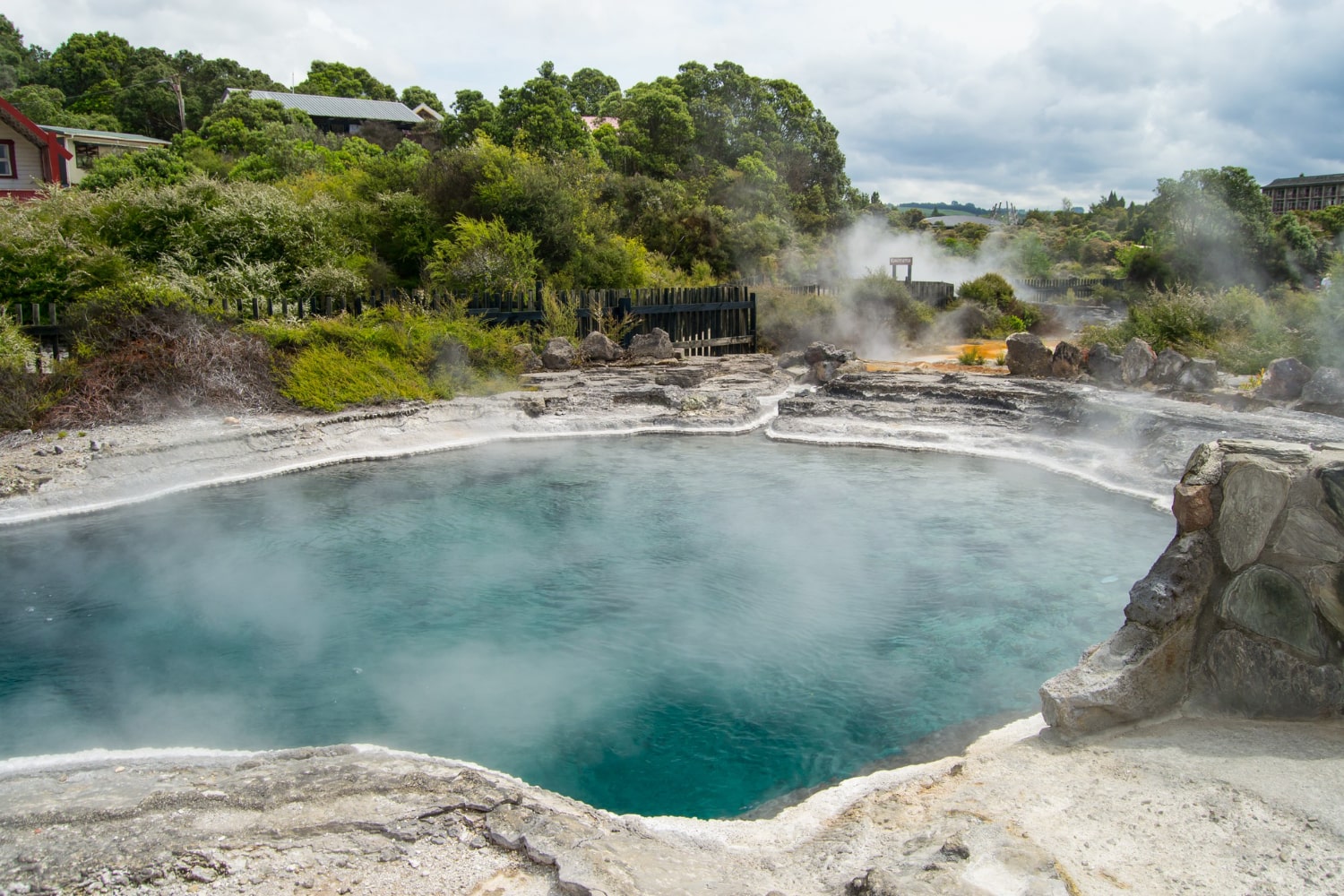Thermal springs have fascinated people for centuries with their healing properties, exotic appearance, and dramatic temperature contrasts. These natural phenomena are not only popular spots for relaxation but also valuable subjects for scientific study. Hot springs can be found in the most remote corners of the world, from Iceland to Japan, and from New Zealand to Chile. In this article, we present interesting facts about thermal springs that you might not have known, offering insights into the uniqueness of this remarkable natural wonder.
- Thermal springs are formed through geothermal activity when surface water seeps deep into the Earth, heats up from underlying magma, and rises back to the surface under pressure. This process can take decades before the water reemerges. What we see is not just rainwater or groundwater, but liquid that has traveled deep through the planet’s interior.
- Some thermal springs can reach temperatures above 90°C, although the average temperature usually ranges between 30 and 60°C. In places like Iceland and Kamchatka, some springs are hot enough to boil eggs or cook food. Local residents often use these hot waters for practical purposes and traditional cooking.
- Unique microorganisms that can only survive in extreme heat thrive in thermal springs. These organisms, known as thermophiles and hyperthermophiles, have adapted to live in high-temperature environments. Their discovery has led to significant advancements in genetic engineering and biotechnology.
- In many cultures, thermal springs have long been regarded as sacred healing sites. In Japan, the onsen tradition involves bathing in hot springs combined with meditation and relaxation. In Europe, thermal baths have been used for both hygiene and wellness since Roman times.
- The water in some thermal springs can change color due to the presence of different minerals and bacteria. For example, the famous Morning Glory Pool in Yellowstone National Park displays vivid blue, yellow, and orange hues caused by colonies of thermophilic organisms. These colors attract tourists and are also a focus of scientific observation.
- Certain hot springs create limestone or silica terraces that look like natural staircases. The most well-known examples are Pamukkale in Turkey and Mammoth Hot Springs in the United States. These terraces form over hundreds of years as minerals settle and build up into stunning formations.
- While many hot springs are safe for bathing, some contain high concentrations of hydrogen sulfide or other toxic substances. Springs with high acidity levels, such as Boiling Lake in Dominica, can be particularly dangerous. These locations are usually fenced off and marked with warning signs.
- New Zealand is home to one of the world’s largest geothermal areas — Wai-O-Tapu, which includes numerous hot springs, mud pools, and geysers. The area is known for its intense colors and strong sulfuric smells, resulting from the high mineral content.
- Some thermal springs are located underwater in oceans and are difficult to spot from the surface. Such phenomena have been recorded off the coasts of Italy, Greece, and Japan. In these areas, the seawater may be significantly warmer, and divers sometimes use the underwater currents for therapeutic purposes.
- In the Himalayas, there are thermal springs located over 3,000 meters above sea level. Bathing in such high-altitude springs creates a unique experience of cold air and hot water. These springs often hold spiritual significance for Buddhist monks.
- Thermal springs are used for geothermal energy production, where the Earth’s heat is converted into electricity. Countries like Iceland generate over 85 percent of their heating needs from geothermal sources. This demonstrates a sustainable approach to utilizing natural energy.
- Hot springs can become less active or even disappear due to earthquakes or volcanic eruptions. Such changes are commonly observed in geologically active zones. Sometimes, new springs emerge to replace the old ones, highlighting the dynamic nature of underground processes.
- In some countries, thermal springs serve as major tourist attractions and generate significant revenue. Budapest, for example, has more than 100 springs and is officially known as the spa capital of Europe. Millions of tourists visit the city each year to experience its thermal baths.
- There are thermal springs with colored water that change temperature throughout the day depending on underlying volcanic activity. In Colorado, some springs are cold in the morning but become warm by evening. Even experienced geologists and travelers are surprised by such phenomena.
- In Latin American countries such as Peru and Chile, local communities have used thermal waters for generations to treat skin conditions, joint problems, and respiratory illnesses. These practices are part of traditional medicine passed down through centuries.
- The presence of a thermal spring in a particular region may indicate potential volcanic activity in the area. While most springs are safe, scientists monitor their activity closely to prevent possible disasters. This is especially important in densely populated regions.
These fascinating and surprising facts about thermal springs reveal how diverse and awe-inspiring these natural features can be. They are not only beautiful but also valuable in scientific, energy, and health contexts. Studying thermal springs opens new doors to understanding Earth’s inner workings. Such natural wonders remind us of the vibrant and dynamic nature of our planet.





